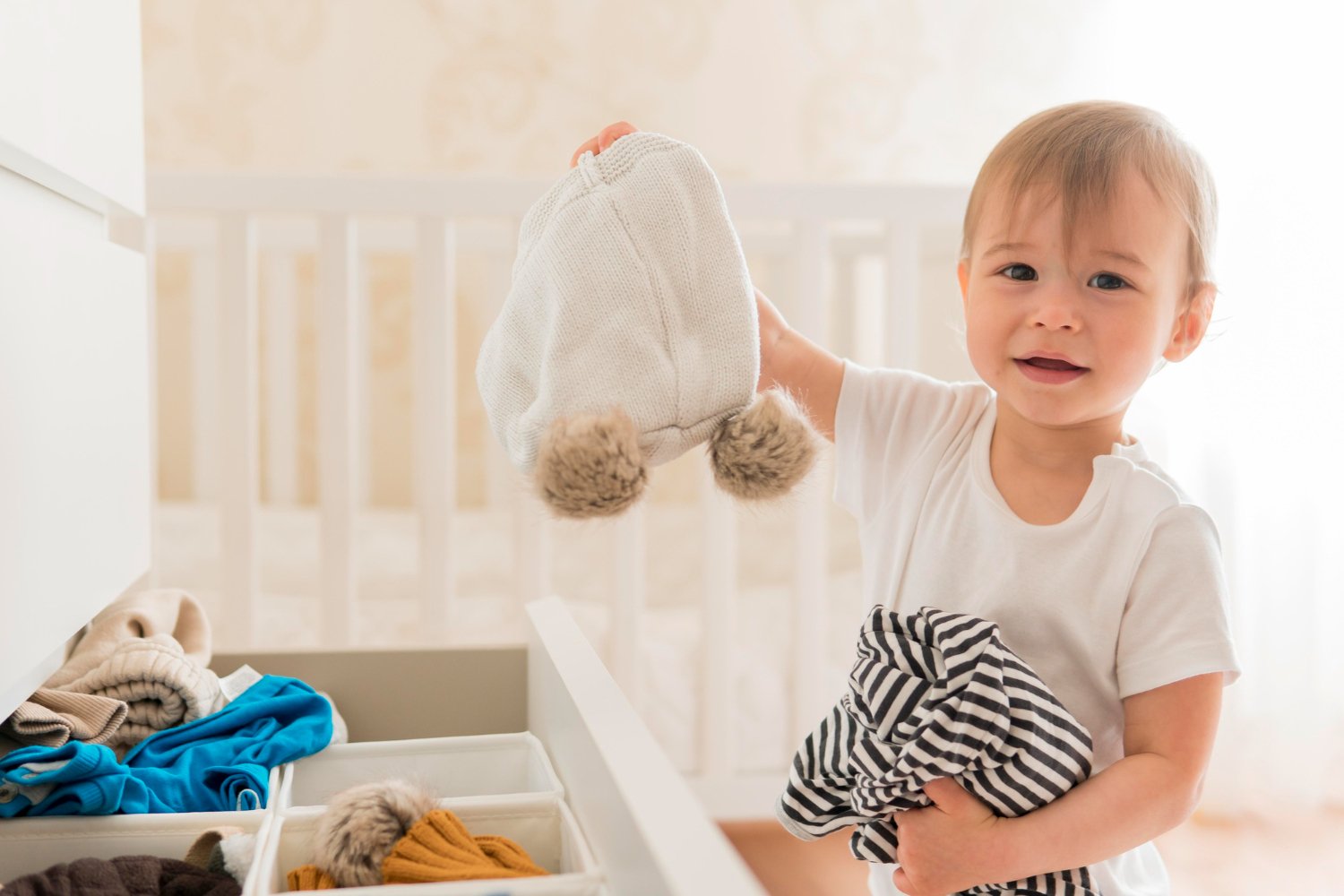
How to Wash Baby Clothes?
How to Wash Baby Clothes? Washing baby clothes requires a delicate touch and special care to ensure they remain soft, safe, and free from irritants. This comprehensive guide will walk you through the steps to wash baby clothes properly, from sorting and pre-treating stains to choosing the right detergent and drying methods.
Why Washing Baby Clothes Differently is Important
How to Wash Baby Clothes: Babies have sensitive skin that is prone to irritation and allergies. Washing their clothes with regular detergent or using standard washing methods can introduce harsh chemicals, residues, and allergens that may cause discomfort or skin issues. Additionally, baby clothes often have special fabrics and finishes that require gentle handling to maintain their quality and longevity.
Sorting Baby Clothes
Separate by Color
How to Wash Baby Clothes: To prevent color bleeding and fabric damage, it’s essential to sort baby clothes by color before washing. Group white and light-colored garments separately from dark and bright-colored ones. This practice helps maintain the original colors and prevents darker dyes from staining lighter fabrics.
Separate by Fabric Type
Different fabrics require different care. Sort baby clothes by fabric type, such as cotton, wool, and synthetics. Washing similar fabrics together ensures they receive the appropriate care and prevents delicate fabrics from getting damaged by rougher materials.
Pre-Treating Stains
Common Baby Stains and How to Treat Them
How to Wash Baby Clothes: Babies are prone to various stains, including milk, formula, food, and bodily fluids. Pre-treating these stains before washing helps ensure they are completely removed.
Milk and Formula: Soak the stained area in cold water and gently rub it with a mild detergent.
Food: Scrape off any solid residues, then apply a stain remover or a paste made from baking soda and water.
Bodily Fluids: Rinse the stain under cold water and pre-treat with a mixture of water and baby-safe detergent.
Choosing the Right Detergent
Detergent Types
When selecting a detergent for baby clothes, choose one that is free from harsh chemicals, fragrances, and dyes. Opt for detergents labeled as “baby-safe” or “hypoallergenic.”
Ingredients to Avoid
Avoid detergents with the following ingredients, as they can cause skin irritation:
Fragrances
Dyes
Bleach
Optical brighteners
Enzymes
Washing Baby Clothes
Water Temperature
How to Wash Baby Clothes: Use cold or warm water to wash baby clothes. Hot water can shrink fabrics and set stains, while cold water is gentle on delicate materials and helps preserve colors.
Washing Machine Settings
Select the gentle or delicate cycle on your washing machine. This setting uses less agitation and helps protect the fabrics. Use an extra rinse cycle to ensure all detergent residues are removed.
Hand Washing
For particularly delicate items, hand washing is the best option. Fill a basin with lukewarm water, add a small amount of baby-safe detergent, and gently agitate the clothes. Rinse thoroughly and squeeze out excess water without wringing.
Drying Baby Clothes
Air Drying vs. Machine Drying
Air drying is the gentlest method for drying baby clothes. Lay them flat on a clean towel or hang them on a clothesline out of direct sunlight. If you prefer using a dryer, choose the lowest heat setting and avoid over-drying to prevent fabric damage.
Using Fabric Softeners
Avoid using fabric softeners on baby clothes, as they can leave residues that irritate sensitive skin. If you want to soften fabrics, consider using a cup of white vinegar in the rinse cycle.
Ironing and Storing Baby Clothes
Ironing Tips
How to Wash Baby Clothes: Iron baby clothes on a low setting, and always check the care label for specific instructions. Use a pressing cloth to protect delicate fabrics and avoid direct contact between the iron and the clothes.
Proper Storage
Store baby clothes in a cool, dry place. Use breathable storage bags or containers to prevent mold and mildew. Keep clothes away from direct sunlight and areas with high humidity.
Tips for Maintaining Baby Clothes
Regular Inspection
Regularly inspect baby clothes for signs of wear and tear. Check for loose threads, small tears, or stretched-out fabrics. Addressing these issues promptly helps extend the life of the garments.
Dealing with Wear and Tear
To repair minor damages, use a needle and thread to mend small tears or reinforce weak seams. For more significant damage, consider repurposing the fabric for other uses or donating the clothes.
Conclusion: How to Wash Baby Clothes?
How to Wash Baby Clothes? Washing baby clothes properly is crucial for maintaining their softness, safety, and durability. By taking the time to sort clothes by color and fabric type, pre-treating stains effectively, choosing the right detergent, and using gentle washing and drying methods, you can ensure that your baby’s clothes remain clean, comfortable, and free from irritants. Regular inspection and proper storage will also help extend the life of these tiny garments.
By following this comprehensive guide, you can confidently care for your baby’s clothes, providing them with a wardrobe that is not only clean and fresh but also safe for their delicate skin. Whether you’re dealing with everyday wear or special hand-me-downs, these steps will help you keep your baby’s clothes in the best condition possible, ensuring that they are always ready for another day of exploring and growing.
Frequently Asked Questions
Q:1 How often should I wash baby clothes?
A:1 It’s a good practice to wash baby clothes after each wear, especially for newborns. This helps remove any potential irritants and keeps the clothes fresh and clean.
Q:2 Can I use regular detergent for baby clothes?
A:2 It’s best to use a detergent specifically formulated for baby clothes or one that is free from fragrances, dyes, and harsh chemicals. Regular detergent may contain ingredients that can irritate a baby’s sensitive skin.
Q:3 How do I handle hand-me-down baby clothes?
A:3 When using hand-me-downs, inspect the clothes for any signs of wear and tear. Wash them thoroughly before use, following the same steps outlined in this guide, to ensure they are clean and safe for your baby.
See More










